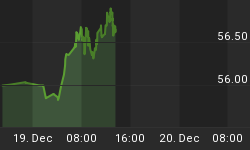"The least initial deviation from the truth is multiplied later a thousand-fold."
Those were the words of Aristotle, words that have stood the test of time and are a perfect fit to what has transpired generally in the financial markets the last few years, and specifically since late July. This latter period has also most certainly confirmed what those of us who saw through the smoke and mirrors have been warning about for years.
Having chosen easy street long ago at the cost of harvesting bitter fruit later, the United States today finds itself shackled with trillions of dollars in debt, credit market debt and other debt-linked instruments; a precarious position for any country, with dire consequences should a liquidity contraction of anything higher than magnitude 0.0 not be met by a fierce and immediate response.
With a history of ironing out similar "problems" in the past both at home and abroad, it should have been obvious to everyone that the U.S central bank would lead a cavalry to the rescue. We initially saw just that in August, where in a coordinated effort the world's central banks injected hundreds of billions of dollars into the financial system. Of course similar to the abolition of M3, what if any other buttons might have been pushed or levers pulled is very difficult to ascertain.
And earlier this week the Fed lowered its key fed funds rate to 4.75. A weak employment report and continued favorable "core" readings on inflation arguably provided the necessary cover for the rate reduction. These and perhaps others will undoubtedly continue to provide good cover through the end of this year and next, as I doubt the Fed is done in one.
It continues to boggle the mind, however, that many continue to view government data including the "core" rate of inflation as anything other than meaningless statistics. Reported ex food and energy, this would be akin to a job seeker proclaiming to be an 'A' student ex all the F's in his major courses. As the majority of employers might care just a little bit more about those particular grades, it is puzzling that economists who continue to place any weight on the "core" number aren't similarly laughed out of the room.
As was to be expected, news of the rate cut led to the dollar getting whacked. The long queue was headed by a bag of silver rounds and a few shiny gold bars, along with every other asset of the tangible variety. Even other fiat currencies took their turn, save for old reliable the Japanese Yen, who like a comfortable old shoe, didn't let the dollar down yet again. The result was a greenback decisively knocked off the 80 support level on the dollar index, which coincided with many precious metals stocks also coming to life.
Where to from here? If as I expect the Fed continues to lower rates we can expect more of the same. Precious metals and energy will continue their bull run. The dollar will continue a decline which in all likelihood places a floor under both the stock and particularly the U.S real estate market at some point, probably in the next 12-18 months, at least in nominal terms.
Whether the world's central banks grudgingly play along and lower rates themselves, or stand firm going forward, is the key question. The last century saw hyperinflations in Europe and China as well as in other countries, so the rest of the world is certainly no stranger to the ravages of money printing.
The U.S consumer has led the charge for many years, shouldering most of the consumer spending that has kept world economies humming along. You just don't replace that type of legendary consumer overnight, and certainly not one that economies around the world dedicate folk songs to and dance about on mountain tops.
But that is not a great thing. Americans have forgotten all about savings and investing, which is the true measure of prosperity. An American consumer that simply lives for today in many ways is like the class clown. By lowering rates themselves to buy a little more time, the rest of the world continues to hand him a flunking grade, bringing him back for yet another year.
A world where billions produce for the consumption of 300 million Americans makes no sense. That would be like going to a ball-park and having the crowd serve the ushers hot-dogs, instead of the other way around. The rest of the world knows this, but needs a little more time to sort things out.
In that respect I doubt the Chinese simply take over, who if reports are to be relied upon, save over 30% of their income. As their currency appreciates over time the Chinese do represent the future source of consumer prowess -- and the U.S.'s big banks are certainly positioning themselves there for that eventuality -- but I believe it will be a gradual transitioning process. Saving and investing is a cultural thing in many parts of the world, so replacing the infamous American consumer will be no easy task.
In the meantime, one has to play the cards they are dealt. That means investing in gold, silver, energy and other commodities. And let's not pay any attention to media references of $850 gold from 1980, and how the current gold price is approaching that number. Do we compare today's price of bubble gum or cup of coffee to what they cost in 1980? Where was the Dow Jones Industrial Average in 1980?
In today's dollars I'm guessing the 1980 gold price is probably somewhere in the $200 range, if not lower. So it should be obvious that to even approach 1980 levels in real terms gold today would need to be well into the thousands of dollars.















